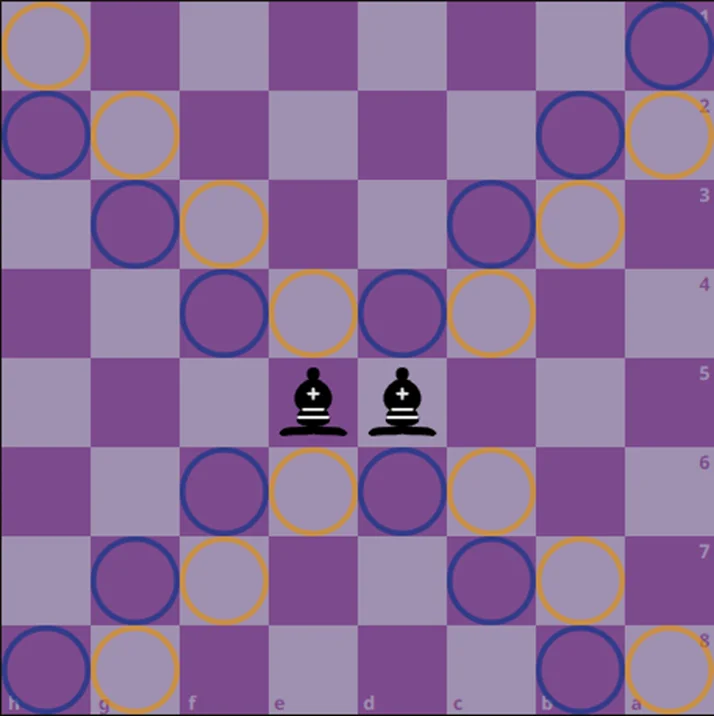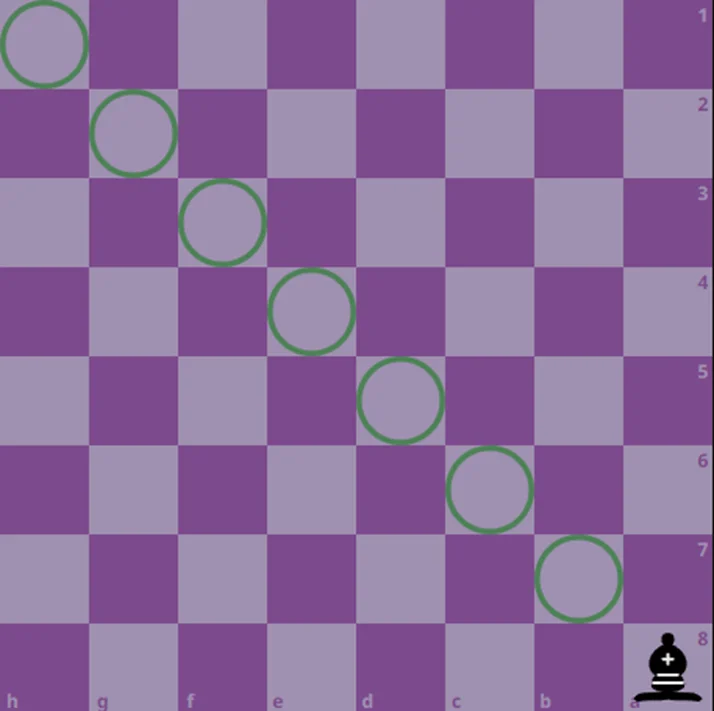How Does The Bishop Move In Chess?
03/06/2023 - Actualizado: 21/06/2023
Let's get to know one of the most underrated pieces in chess, a piece that well occupied can be a knife for the position of our opponent, a piece that will be the key to victory in many of our games, we are talking about the powerful bishop.
The bishop is characterized by imitating the ancient priests.
Its head is pointed with a sphere on it, imitating the cap worn by the bishops of the past.

In chess books it is represented by a B or by this figure ♗, ♝ (depending on the side).
The numerical value of the Bishop is 3 as is the Knight (this can sometimes be a relative value and not the most important).
The bishop is usually the third or second piece to move, after Pawns and knights.
How the bishop moves
The movement of the Bishop is very similar to that of the Rooks with the difference that instead of moving in a straight line the bishop moves diagonally.

The dark squares Bishop can only move on those squares (marked with blue), while the other Bishop controls the light squares (marked with yellow).
This is the reason why there are two bishops, so that each one is in charge of controlling a color.
As we can see in the image, each Bishop controls a total of 13 squares as long as it is in a central position.
While if it is in a corner it controls 7 squares.

But this does not mean that its power is reduced, often this is its best position, on any square of the largest diagonal (depending on the color, dark or light squares). Since it is very difficult to keep the Bishop centralized to squeeze its maximum power, because it is exposed to attack from the opponent's pawns and pieces.
The role of the bishop in chess
The bishop is our weapon of attack at a distance, it does not need to be present in the center to exert pressure and control over it, unlike the knight that does need to be in the center or very close to be able to exert more pressure.
The Bishop loves open positions, where the pawns are not in the way on the squares he controls.
We have to keep in mind that when a bishop disappears (we exchanged it for another piece or it was captured) that color of squares is a little weaker, it does not mean that we lose the game or that we made a mistake, only that we have to be a little careful now that those squares are left with one less defender.
The bishop duo
Like rooks, bishops work best together to control the entire board, such is the power of this pair that it is considered that the player who keeps both Bishops has a slight advantage over the player who has only one Bishop or none at all.
This of course is not absolute, there are positions where the two bishops are totally useless, which as you can imagine are those positions where everything is blocked, a totally closed position without even a diagonal to take advantage of.
So strong is this pair that it is possible to perform a checkmate by coordinating their powerful reach plus the help of our king.
One of the most beautiful checkmates in chess occurs when the two bishops are coordinated taking advantage of the bad position of the king and the enemy pieces, the famous "Boden's Mate".
Have you ever given a mate with a bishop or with the powerful duo?
⭐️ If you want to know more about other articles similar to How Does The Bishop Move In Chess? you can visit our category Chess For Beginners. We are waiting for you inside 👍



Leave a Reply